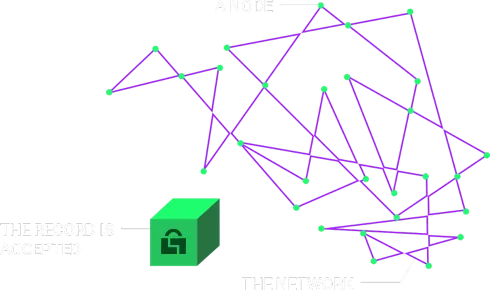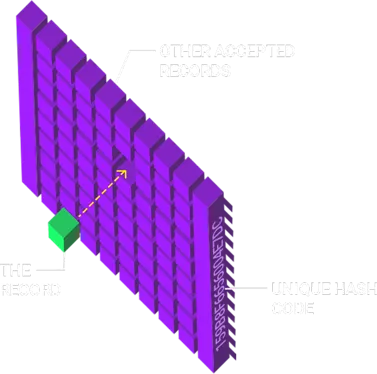A quick lesson on how blockchain works
A blockchain is a database that is shared acoss a network of computers. Once a record is added to the chain, it is very difficult to change. The network makes constant checks to ensure all copies of the database are the same.

The database
Records are grouped together into blocks and added to the chain one after another. These are the basic pieces of a blockchain:
Record
Can be any information, a serial number for example
Chain
All the blocks linked together

How a serial gets added to the blockchain
STEP 1
A serial is recorded. The record includes the details such as serial number, timestamp and activation status.
STEP 2
The record is checked by a decentalized network. The computers in the network (called “nodes”) check the details of the record to make sure it is valid.
STEP 3
The records that the network accepted are added to a block. Each block contains a unique code called a hash. It also contains the hash of the previous block.
STEP 4
The block is added to the blockchain. The hash codes connect the blocks together in a specific order.

What makes the blockchain tamper proof
Blockchain Hash
A hash code is created by a math function that takes digital information and generates a string of letters and numbers from it.
Any change to the original input will generate a new hash. If someone deleted just one period from the entire Romeo & Juliet text, it would be noticed because the hash would change.

Original hash of Romeo & Juliet:
6958C66BE1FFB2D21FBB88997CBE6333BEABE53F

New hash of Romeo & Juliet with a single period removed:
A865DAD484AF3BC96110A49A88FAEB53EB244C70
A changed hash breaks the chain










